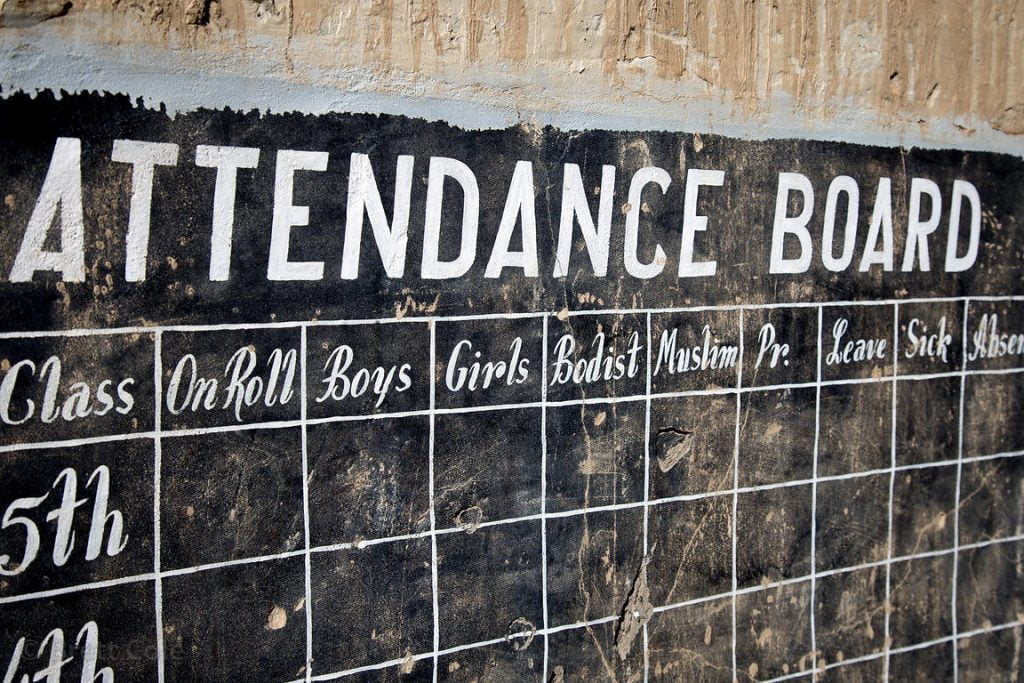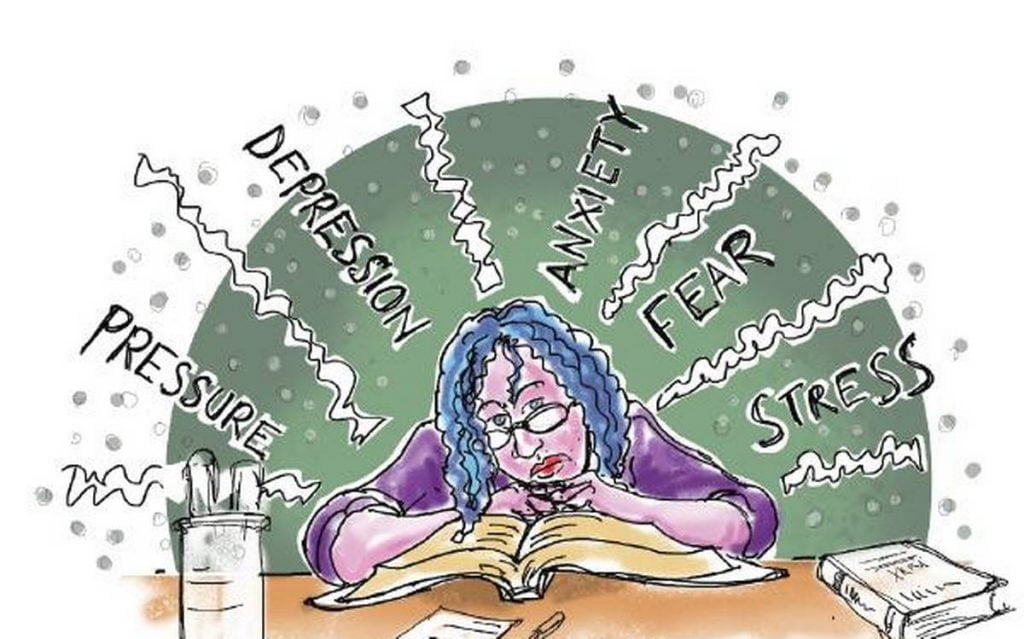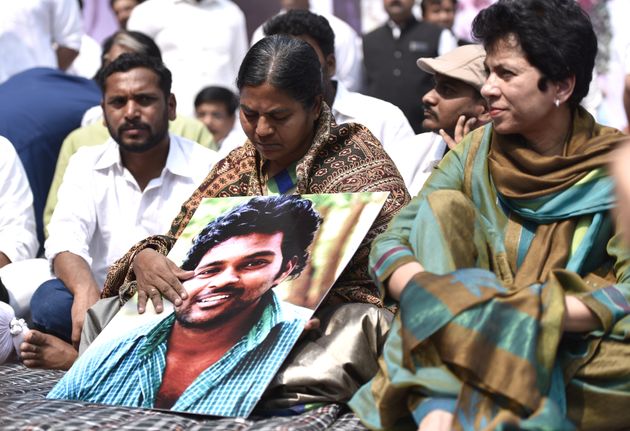Editor’s Note: This month, that is August 2020, FII’s #MoodOfTheMonth is Campus Experiences, where we invite various articles to highlight the diverse range of encounters we often confront when we are a part of any educational institution or space for learning be it schools, universities, colleges, tuitions and home. If you’d like to share your article, email us at pragya@feminisminindia.com.
On 31st July 2020, the Supreme court of India dismissed two special leave petitions filed by over 500 undergraduate students against Mithibai College. Consequently, the students were barred from appearing for their final exams and lost a full academic year due to a lack of attendance. As a final year student in an institution that is renowned for imposing the 75% attendance policy with astonishing vigor and complete apathy, I was not surprised.

Image Source: Brett Cole
The 75% attendance policy has been a subject of great controversy since its imposition in 1999, as per Ordinance 119 of the Mumbai University’s Circular No. UG/502. The rationale sounded by proponents of the policy is that it fosters greater engagement between the students and the discipline, facilitates interaction between peers in classroom spaces, and ensures quality control.
And yet, this seemingly reasonable policy is not free of faults.
In present times, wherein conversations about mental health and wellbeing are becoming more commonplace, the 75% attendance policy maintains a blissfully exclusionary perspective towards it. With an increasing number of students being diagnosed with such illnesses, this exclusionary attitude becomes more alarming. It communicates an extremely apathetic outlook on the part of the institutions towards its students. As such, introspection is necessary to study how the attendance policy affects students’ mental health, and their way of negotiating with it.
On 31st July 2020, the Supreme court of India dismissed two special leave petitions filed by over 500 undergraduate students against Mithibai College. Consequently, the students were barred from appearing for their final exams and lost a full academic year due to a lack of attendance. As a final year student in an institution that is renowned for imposing the 75% attendance policy with astonishing vigor and complete apathy, I was not surprised.
When speaking of students’ mental health conditions it is crucial to recognise that even without the 75% mandatory attendance policy, there is no dearth of stressors for the average college student. Countless assignments, readings, practicals, internships (often unpaid), extracurricular activities (often mandated)—there’s enough on the college student’s plate daily. Besides, the race for merit places a significant amount of stress on students, resulting in them trying to “do it all” to appear “employable” as the competition for jobs keeps on increasing. In addition, despite anti-ragging laws being in place, ragging/bullying continues to be a ground reality in educational institutions today, which can, and often does, harm the victim’s mental health considerably.
Now, when you add physical illnesses, mental illnesses, adverse weather conditions, issues during a commute, and clashing events, the 25% leeway does not seem sufficient, or even close.
When these points were brought up by my peers in a classroom discussion, a professor conveniently stated that we could always present a medical certificate in case of a physical illness or a therapist’s note in context to a mental illness. What she failed to consider however, was the large knowledge gap that exists about mental health issues, as well as the stigma and expenses of going to therapy.

As a middle class, cishet, English speaking woman, with educated parents, the concept of mental health was foreign to me until I entered junior college. In spite of having a counselor in school, mental health wasn’t a concept that was discussed or even addressed in the classroom space. Most of us didn’t even visit the counselor, because it wasn’t presented as an option, and because our teachers reinforced the idea that only “deviant” and “academically poor” students were sent to the counselor. The rare times that mental health issues were brought up, our teachers instructed us to “just be positive.”
The students who suffer from mental illnesses, but do not have access to therapy end up having issues in fulfilling the attendance criteria. They lose an entire academic year due to a lack of attendance and incur financial losses. These cases are narrated repeatedly by professors and principals as a warning to other students.
Despite being as privileged as I am, and having access to a mental health professional in my school, this was my outlook towards mental health. However, for an individual belonging to a different caste, class, sexual orientation, gender, the picture could be much darker. When Rohith Vermula, a Dalit Bahujan Ph.D. student died by suicide, a certain newspaper posed the question—“Was it oppression or depression?” In reality, it often is oppression leading to depression. A person’s social position determines how their mental health is, their understanding of mental health, as well as their access to mental health professionals.

There exists a surmountable knowledge gap regarding mental health among socially and economically disadvantaged groups. Individuals from minority groups are also more prone to be victims of bullying/ragging owing to their caste / religious / gender / sexual identity, thus causing significant harm to their mental health. Accessing mental health resources is also an obstacle. Moreover, in times when basic medical facilities are denied to individuals due to their caste identity, or sexual orientation, discrimination by mental health professionals continues to be a relevant fear.
Also read: A Closer Look At Sexism In Engineering Colleges
Furthermore, the financial costs of therapy deter several individuals from accessing it. On average, a 1-hour therapy session costs between Rs.800 – Rs. 1000, which is a substantial amount considering that therapy is an ongoing process requiring multiple such sessions. And while I may be able to afford this facility, several students cannot. Subsequently, the students who suffer from mental illnesses, but do not have access to therapy end up having issues in fulfilling the attendance criteria. They lose an entire academic year due to a lack of attendance and incur financial losses. These cases are narrated repeatedly by professors and principals as a warning to other students.
There exists a surmountable knowledge gap regarding mental health among socially and economically disadvantaged groups. Individuals from minority groups are also more prone to be victims of bullying/ragging owing to their caste / religious / gender / sexual identity, thus causing significant harm to their mental health. Accessing mental health resources is also an obstacle.
Consequently, to avoid this very situation, students begin to internalise a ‘live with it’ attitude towards their mental health. It lies below attendance and good grades in the priority list; swept to the side, ignored. Needless to say, this way of dealing with one’s mental health ends up doing more damage to the individual. It also reinforces a very capitalist notion of one’s worth being tied to one’s productivity and success, leading to a complete disregard of one’s physical and mental wellbeing.
Mental wellbeing or more like the lack thereof becomes a subject of jokes; I myself have been a part of several of these conversations. Having mental health issues, sleep deprivation, breakdowns, is normalised and in some cases glorified, if those are the costs to be borne to have good grades or other such meritorious things. The idea of the “insane genius” is one such example.
Having a specific percentage of attendance compulsory in educational institutions is not inherently a terrible idea. However, the required percentage cannot be arbitrarily decided upon. The policy needs to be formulated by taking into consideration several factors including students’ mental health as a collective. The policy also needs to include concessions for individuals students who may be suffering from mental illnesses.
Apart from this, attempts should be made by educational institutions to de-stigmatise mental illnesses and bridge the knowledge gap surrounding them. This includes sharing resources about mental wellbeing, holding discussions in class about the importance of seeking help, and ensuring that counselors are accessible to students within the campus.
Also read: The Increasing Social Exclusion In Private Schools In Urban India
It’s high time that students’ mental health is taken seriously by educators and policy formulators. We need our students to learn because they desire to, but not at the expense of their mental wellbeing.
References
Priyanka Joshi is currently pursuing a Bachelor of Arts in Psychology and Anthropology from St. Xavier’s College, Mumbai. She’s an intersectional feminist and her interests include writing, reading, cooking; or at least trying to. You can find her on Instagram and LinkedIn.
Featured Image Source: The Indian Idiot




